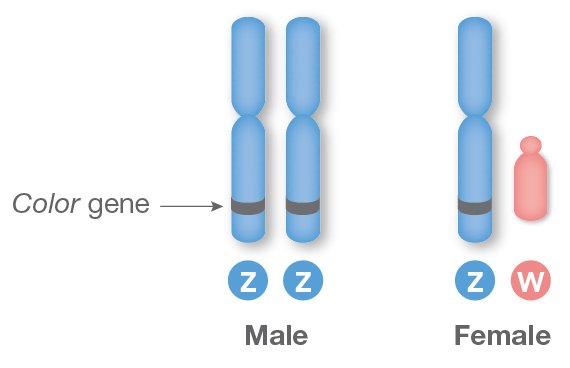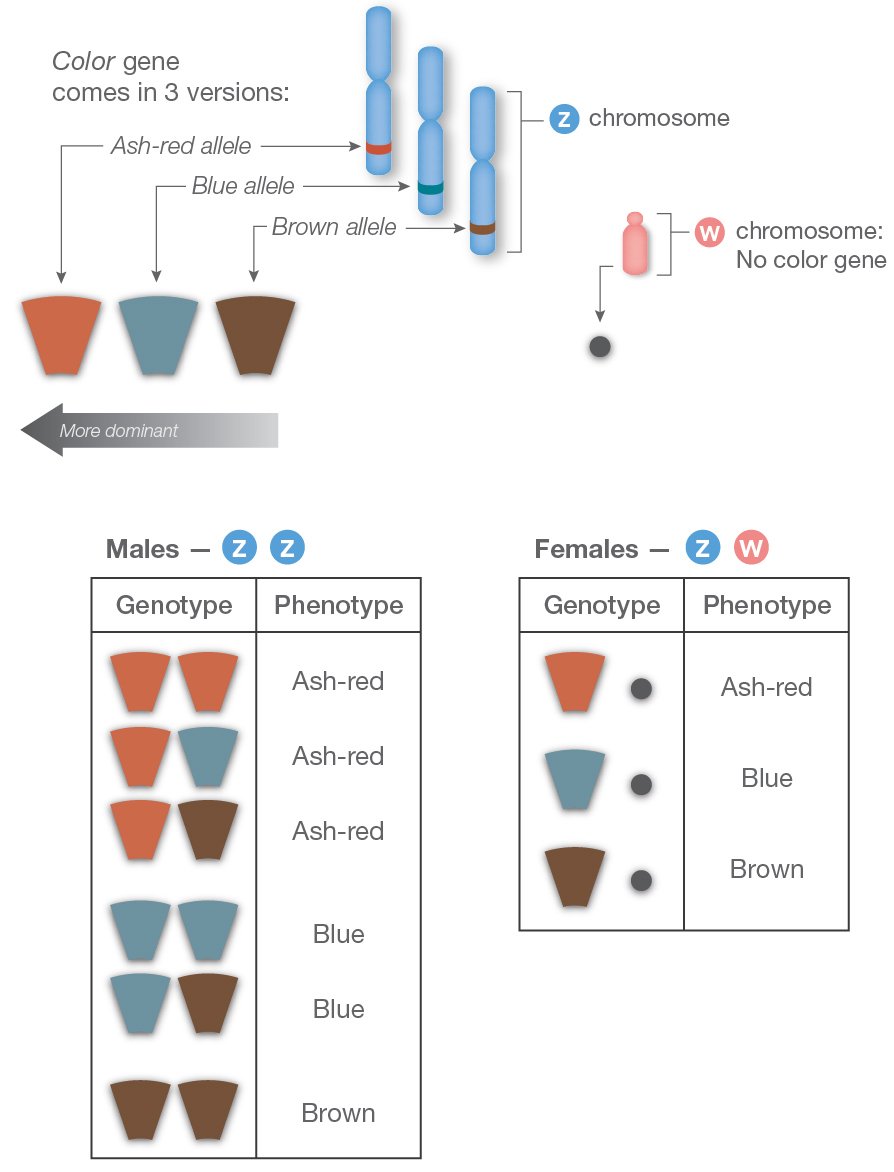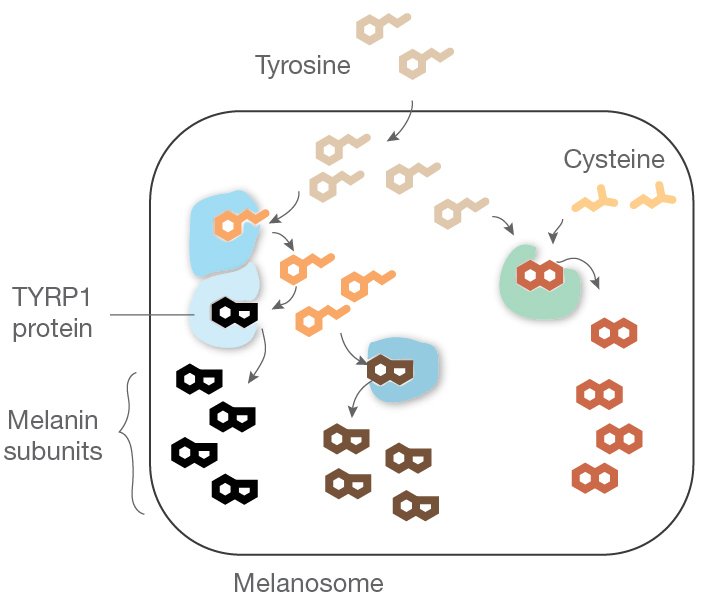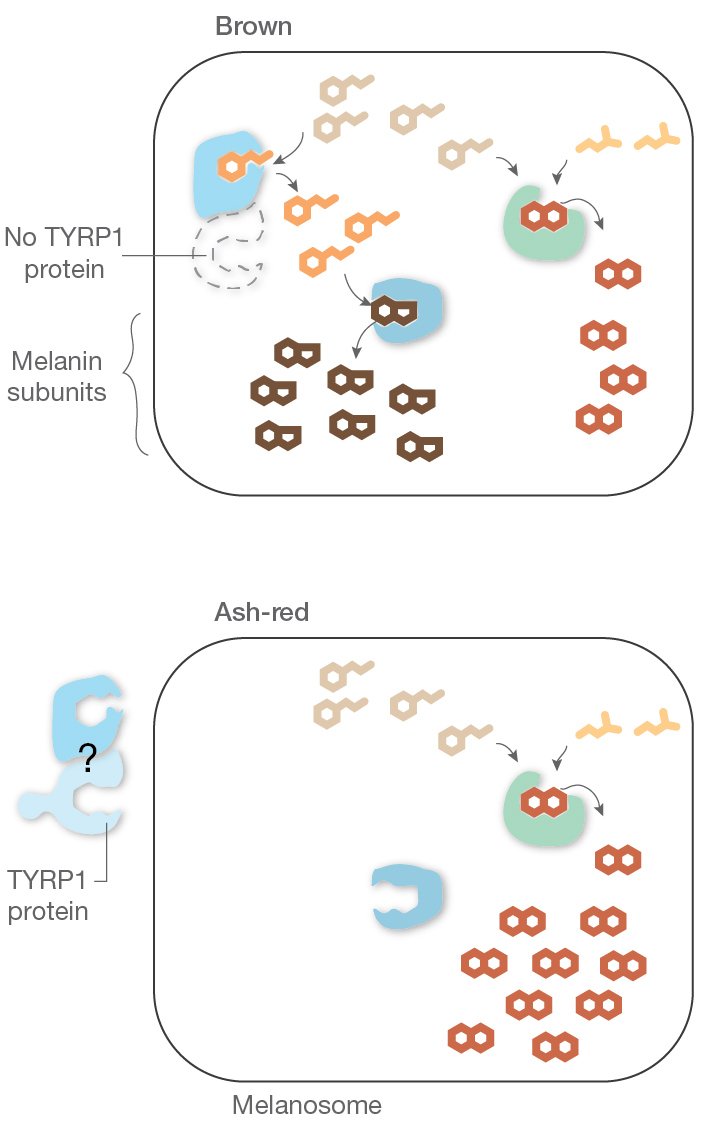The different versions, or alleles, of the Tyrp1 gene have slightly different DNA sequences. Since DNA codes for protein, the different alleles lead to differences in TYRP1 protein. Because TYRP1 is part of the melanin assembly line, changes to this protein affect the proportions of melanins that are made.
The 'blue' allele codes for a TYRP1 protein that functions normally. Birds with this allele make mostly black melanin, but they also make some brown and red. As shown in the diagram above, all of the assembly line pieces are present and working.
The 'brown' allele is "broken"—no protein can be made from it. A bird with two 'brown' alleles makes no TYRP1, so there's a piece missing from the black-melanin assembly line. It cannot make black melanin. Instead, the raw materials are used mainly for making brown melanin, though these birds also make some red melanin.
If a bird has one 'brown' allele and one 'blue' allele, they have a blue phenotype. That’s because there’s enough normal TYRP1 being made from the 'blue' allele for the birds to be able to make black melanin.
The 'ash-red' allele codes for a version of TYRP1 that is not properly processed—it has an extra little piece attached to it, and it appears to get stuck before it can reach it's proper place in the cell’s melanosome, the place where melanins are made.
If it were simply a matter of melanosomes lacking TYRP1, we would expect 'ash-red' to behave just like the 'brown' allele—but it doesn’t. Because the 'ash-red' allele is dominant, scientists think the sticky TYRP1 protein must be preventing other brown/black assembly-line proteins from reaching the proper place—including the normal TYRP1 protein that’s made in birds that carry one 'ash-red' and one 'blue' allele (this effect is called “dominant negative”). Whatever the mechanism, the protein made from even a single 'ash-red' allele shuts down brown and black melanin production.
In other animals, melanins also color hair, fur, skin, scales, and more. Variations in the Tyrp1 gene affect fur and feather colors in dogs, cats, cattle, sheep, and quail.
References




